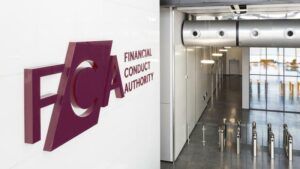In a world swiftly headed towards increased consumption alongside bold net-zero carbon commitments, tackling the issue of how to distribute resources sustainably represents both a challenge and an opportunity for investors and governments, particularly when the existing energy distribution systems we have in our homes and businesses are not very efficient.
Take the UK: 54% of the energy we use to provide electricity is wasted – primarily from generation and transmission losses associated with the UK’s centralised grid system. Of the 29 million existing homes across the UK, at least 19 million still need to be made climate resilient. That means turning them low-carbon and low-energy. Domestic properties account for 30% of the UK’s energy use and around 19% of greenhouse gas emissions, according to the Department for Business, Energy and Industrial Strategy.
This is the backdrop for an emerging and increasingly important sector – energy efficiency represents an underrepresented but critical asset class in which to invest if we have a chance of meeting our net-zero ambitions.
Building energy efficient assets
Part of the challenge for energy efficiency investors is that the assets are not as visible in the same way as renewable or other low-carbon infrastructure. Building and operating renewable assets such as wind and solar PV parks are now an established part of the investor’s lexicon. That must change for energy efficiency.
The scale of infrastructure investment needed to make our energy system more efficient is underarticulated, which presents an opportunity for investors looking to take advantage of a relatively underserviced part of the energy transition market.
The IEA regards energy efficiency as the “first fuel” of all energy transitions, and claims that, by 2035, investments in energy efficiency needs to represent nearly half of all the global energy investments required in order to stay under a 2 degree limit.
When we speak about energy efficient infrastructure, we are typically targeting three ‘sub-sectors’.
First, the heat networks that supply heat from a central source and deliver it to consumers need to be decarbonised. Today, there are a growing number of innovative heat network projects across England and Wales, which deliver reliable and affordable low carbon heat to thousands of homes as well as commercial and industrial premises.
Second, there are currently millions of people in the UK living in energy-inefficient homes, which need investment to lower their carbon footprint and to improve energy efficiency. This requires retrofit measures such as insulation, double glazing, solar PV and heat pumps.
Third, there is a need to deliver distributed generation where renewable technologies used to generate electricity are supplied locally to deliver clean, reliable power, while reducing electricity losses.
Taken together, these assets allow us to use less energy to provide the same output, reducing energy waste, protecting the environment and delivering economic benefits to consumers. More, from less.
Energy efficiency allocations within portfolios
Energy efficiency infrastructure assets typically provide defensive, diversifying characteristics for investor portfolios, which can be valuable in times of market uncertainty.
A key consideration for investors given the current macro backdrop is the return of inflationary pressures as the recovery gathers pace. Energy efficiency assets can provide a degree of protection in this environment through inflation-linked cash flows, built on contracts where energy prices are agreed in advance and subject to delivery.
These long-term, stable cash flows can help to deliver yield for portfolios at a time when traditional assets such as equity and bonds have exhibited volatility, utilising a less saturated market to investors’ advantage.
The changing policy dynamic
The policy tailwinds for energy efficiency continue to grow. In the UK, the need for more energy efficient buildings and developing our carbon storage capabilities was highlighted in the government’s 10-point plan announced in November, while the considerable political capital being expended as the UK prepares to host COP26 in the Autumn has positioned the energy transition as a key policy driver behind the government’s vision for ‘Global Britain’.
This is not to say that there will not be challenges along the way, as the government’s recent scrapping of the underutilised Green Homes Grant makes clear. There is an opportunity here for investors to play their part in marshalling private sector support via both the listed and private markets for the energy efficiency initiatives needed to deliver on our ‘net-zero’ carbon ambitions by 2050.
Energy efficiency offers an exciting way for investors to access the green recovery that is currently playing out across our economy. In the quest for a low-carbon future, a focus on the mix of energy resources at our disposal will be key – but we must also ensure that we use these sources efficiently to achieve our climate goals.








